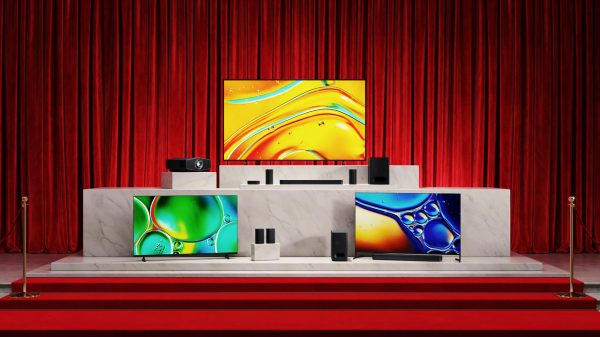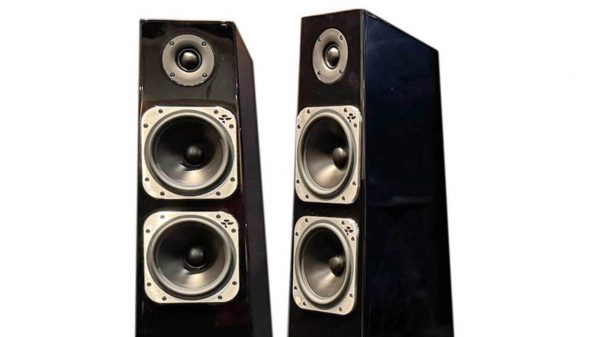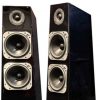Buying a movie ticket used to be pretty easy, but things have certainly changed in recent years. In addition to deciding what movie you want to see, you need to decide what type of movie viewing experience you want to pay for.
There has always been differential pricing in most theaters for matinee vs prime-time showings, and many theaters also offer reserved seating.
In addition, you also have the choice to pay for a basic or elevated movie viewing experience. In this article, we take a look at three options: IMAX, Dolby Cinema, and Laser at AMC.
IMAX
IMAX has been with us for 50 years. IMAX started as a special event viewing experience for museums and theme parks with domed screens up to 30 meters (about 98 feet) in diameter depending on the venue. While many of those venues still exist, IMAX has since transitioned into an elevated movie theater viewing experience with its large wall-to-wall screen and sound system.

A growing number of blockbuster movies are filmed in part or whole in the IMAX format.
Tip: IMAX Theatrical screens can range from 52 to 98 feet high.
IMAX theaters use a 6-channel sound system, and in some theaters you can also wear a headset that provides two extra sound channels for each viewer. Check out more details on IMAX theatrical sound systems.
IMAX films are shot on specifically designed IMAX film or Digital Cameras. An IMAX film can be mastered in film or digital format for theatrical presentation.
- The IMAX Film Aspect Ratio is 1.4:1
- The IMAX Digital Aspect Ratio can be 1.4:1 or 1.9:1 at the discretion of the filmmaker and/or studio.

IMAX film aspect ratios provide both a wide and vertical immersive viewing experience. However, it must be pointed out that if a film only has some segments shot in IMAX, a standard widescreen image will be displayed in between the IMAX segments. This means that viewers will notice aspect ratio changes during the viewing experience.
Tip: There are two ways you can get an IMAX experience at home:
- IMAX Private Theater (prepare to shell out $400,000 minimum – along with providing a large room)
- IMAX Enhanced Program (which provides some IMAX Enhancements to certified off-the-shelf TVs, projectors, and audio components in partnership with DTS).
Tip: Find IMAX Cinema Locations
Dolby Cinema
Desiring to be an alternative to IMAX in the movie theater space, Dolby started offering its Dolby Cinema platform to movie houses in 2014.

Dolby Cinema combines the benefits of Dolby Vision HDR and Dolby Atmos and applies them to the commercial cinema environment.
On the visual side, Dolby Cinema utilizes a laser projection system developed in partnership with Christie Digital. The system includes two 4K laser projectors that are capable of providing high brightness for both 2D and 3D images. When projecting 3D the Dolby 3D format is used.
Dolby Cinema projects images with a 2.40:1 aspect ratio which displays a very wide cinematic image but does not provide the vertically immersive images that IMAX can display
Tip: For more on Dolby Vision, refer to our companion article: WTF is Dolby Vision?
On the audio side, Dolby Cinema theaters feature a Dolby Atmos sound system. Depending on the theater size, the system can range from 16 to 64 channels of audio and up to 128 individual speakers. Also, each channel may be capable of outputting as much as 2,000 watts per channel
Dolby Atmos was introduced by Dolby Labs in 2012. It’s an immersive sound immersion experience. For theaters, a Dolby Atmos sound system combines front, side, rear, back, and overhead speakers with a sophisticated audio processing algorithm that adds non-channel-based spatial information.
Dolby Atmos is heavily promoted for home use in soundbars and surround sound setups, but the Dolby Atmos cinema experience takes it to the next level.
Tip: For more on Doby Atmos read our companion article, What is Dolby Atmos?
In addition to the visual and audio experience, Dolby Cinema venues also provide adjustable seating providing added comfort for cinemagoers.
Tip: Find Dolby Cinema locations
Laser at AMC
With the exception of IMAX projectors used for displaying physical film, IMAX Digital and Dolby Cinema have both incorporated the use of laser projectors. These types of projectors use lasers as their light source, rather than a traditional commercial projection lamp. This provides stability and longevity. In August 2022, AMC embarked on an initiative in partnership with Cinionic to employ laser projectors for all of its prime screen rooms. This is in addition to laser projectors already in use in AMC’s Dolby Cinema venues.

Laser at AMC is already available in 850 select theaters in the LA and NYC markets. Currently, installation is proceeding in Chicago and is expected to branch out to Atlanta, Dallas, and Kansas City by the end of 2023.
Once the AMC/Cinionic implementation is complete, AMC will have converted over 3,000 auditoriums from older Xenon lamp-based projectors to Laser. This will not only allow AMC to elevate the movie viewing experience for prime non-IMAX and Dolby Cinema screens, but the cost of maintenance will decrease substantially, as Laser Projectors can provide up to 6 years of use without the need for periodic lamp replacement.
Tip: Find Laser at AMC Locations.
As far as audio goes, systems will vary depending on location, so you need to check your local theater for details.
Tip: All three options support 3D at the discretion of IMAX, Dolby, and AMC. However, not all locations offer that option (3D with Dolby Cinema is the most rare of the three) when provided by the studios. You need to check individual schedules.
Related Reading: The Beginning of the End: Why Movie Theaters are F#%#&@




















































Chris Boylan
August 1, 2023 at 3:47 pm
Hey, Robert,
Good article. But what about Regal RPX? That’s the only premium movie theater experience in my neighborhood. I think the details vary but RPX normally includes Dolby Atmos and laser projection with screens at least 45 feet wide. I believe they also include Buttkicker motion actuators in some theaters as well so you can feel the bass. No “Smellovision” yet though, as far as I know.
Ian White
August 1, 2023 at 4:38 pm
Chief,
I saw a film at a Regal in Florida with that format. I think it was Florida. Overly loud and too much Buttkicker action. Universal Studios has “Smellovision” on at least one ride.
Ian White
Chris Boylan
August 1, 2023 at 10:40 pm
Well that stinks. Literally.
Ian White
August 2, 2023 at 1:25 am
We saw Top Gun: Maverick last summer in Orlando at that theater and while it was amazing visually, the audio was set far too loud.
I had a similar issue with Oppenheimer last weekend locally watching in the Dolby Cinema. Image quality was superb but the audio was set far too loud and it impacted the dialogue.
IW
Brian Mitchell
August 1, 2023 at 11:13 pm
4DX is the type of theater that puts nearly everything together — 3D, smellovision, motion seating, and wind/fog/mist. It’s like riding a rollercoaster while watching a movie.
Ian White
August 2, 2023 at 1:25 am
Explains why I didn’t like it.
IW